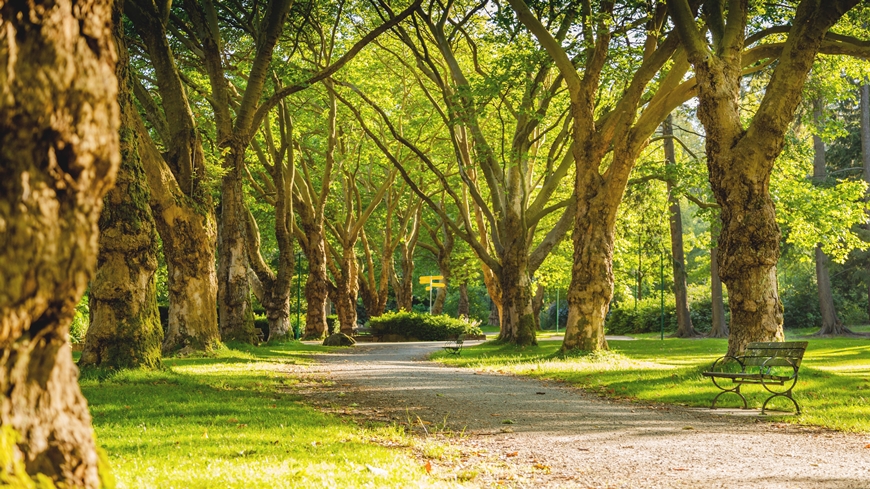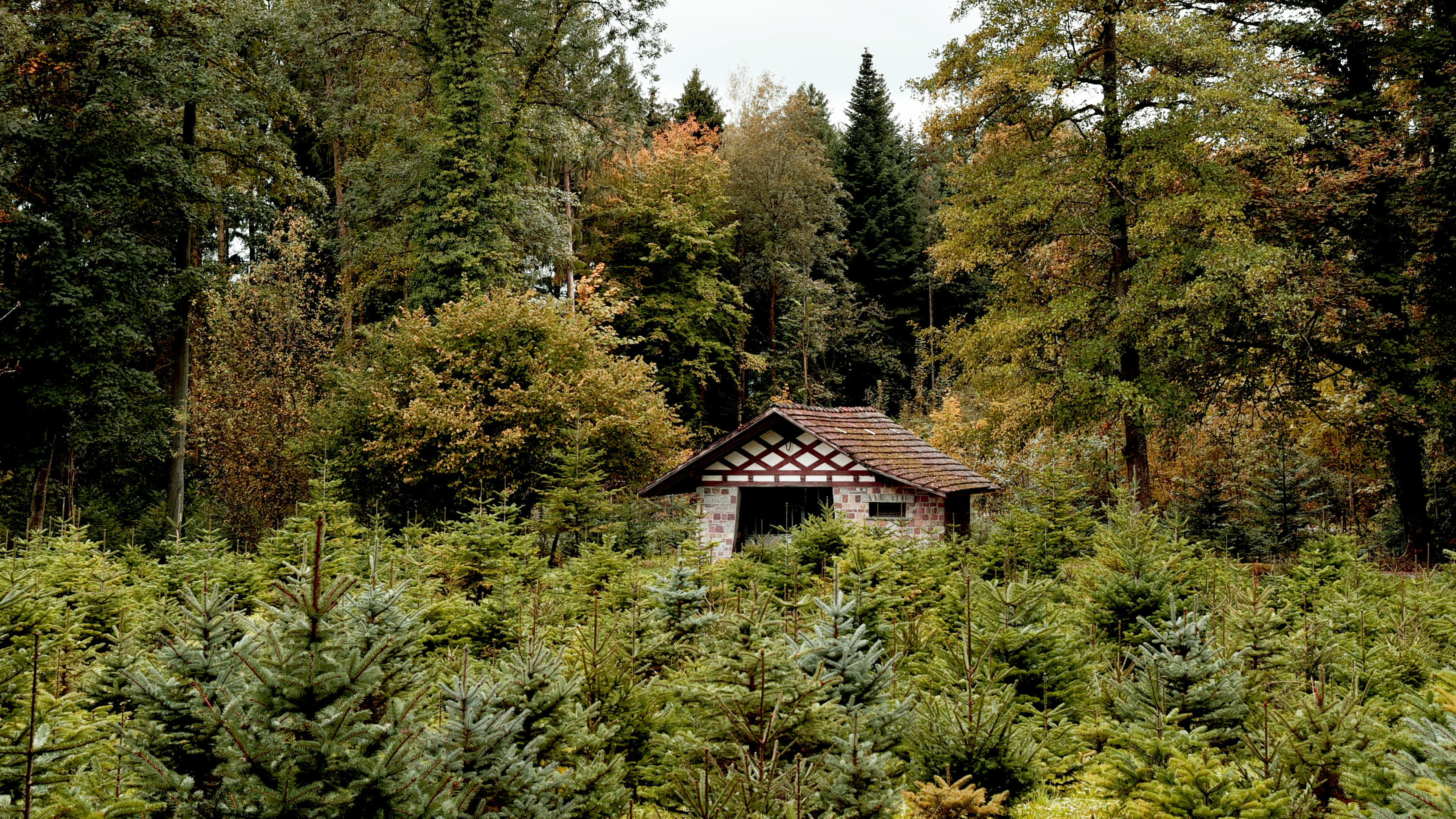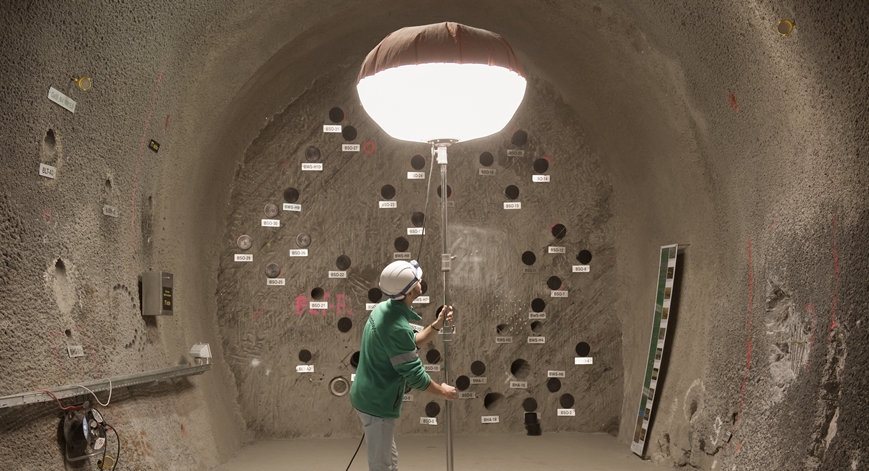Noise protection
Green earplugs
Cars, trains, planes: For two thirds of the European population, traffic noise is part of everyday life. However, the right environment can have a major impact on this nuisance, as Empa researchers have found out. Green spaces in urban areas help to make road and railroad noise less of a nuisance. Only in the case of aircraft noise does this seem counterproductive: the greener the surroundings, the more disturbing the aircraft noise.

Through the window, you hear the traffic noise from down the street, a train rumbles in the distance - that is the everyday life for many of us. Almost 75% of the European population lives in urban areas and only a quarter in rural areas. Noise pollution from cars, trains and planes poses a health problem that should not be underestimated. According to the World Health Organization (WHO), increased noise pollution leads to numerous negative effects on health, from stress and sleep disturbances to cardiovascular diseases and diabetes.
But how can these negative effects of noise pollution in densely populated, urban regions be reduced, and are there ways of influencing the subjective perception of noise? Empa researchers led by Beat Schäffer of the Acoustics / Noise Reduction lab, together with experts from the Swiss Federal Office for the Environment (FOEN), the Swiss Tropical and Public Health Institute and the University of Basel, have discovered that this works. A view out of the window into the countryside can significantly reduce the perceived noise pollution. Whether it's a nearby park, a pond or the mountain range on the horizon: a view into nature, and the noise will disturb us less.
Green lets us relax
For their study, the research team used the so-called NDVI ("Normalized Difference Vegetation Index"), which is calculated on the basis of remote sensing data and documents the entire green space of a specific region - from individual groups of trees at roadsides to large parks. The research group also used data from Swisstopo. All parks and gardens are listed there, as well as other green areas such as agricultural zones and forests. The team then compared the data from Swisstopo and the NDVI with the results of the SIRENE study to find out how noise perception changes among inhabitants of urban areas. In 2019, this study with around 5600 participants provided information on noise pollution from road, rail and air traffic noise. By comparing the data on green spaces in Switzerland with the results of the survey, Schäffer and his team were able to determine how recreational areas affect the perception of noise. Conclusion of the study: Parks and green spaces help to reduce the perception of noise caused by road and train noise. The closer the recreation area to one's own home, the lower the subjectively perceived annoyance from noise emissions.
Ineffective against aircraft noise
It is not surprising that green spaces influence our perception of noise. But much more interesting is the result regarding aircraft noise. It's the opposite to cars and trains: The more green spaces we have, the more disturbed we feel by aircraft noise, according to a comparison of the data. According to Schäffer, there are various reasons for this. "While we can escape from road or train noise by walking a little distance, we cannot do the same with aircraft noise". We are almost helplessly at the mercy of airborne noise, because we cannot escape the noise by a few meters distance. This "being at the mercy of the noise" may lead us to perceive the noise as more disturbing. A second point is the so-called incongruity: "In a park, we expect it to be quiet. If this silence is then disturbed by something that we cannot influence, we perceive this noise as far more disturbing," says Schäffer. For example, we hardly notice an airplane in the sky when we walk around a bustling city.
Green for urban climate
Parks and gardens are helpful not only against noise, but also in the fight against so-called heat islands, as an Empa study has found out. The Münsterhof in Zurich served as an example. The researchers selected the site to carry out climate simulations. The calculations show that the temperatures on the Münsterhof would be significantly lower if the square were not paved but covered with earth and grass. The ground would cool down more overnight and store less heat during the day.
List of criteria
In a next step, the researchers want to look even further into the psychological and especially physiological aspects of noise and include other factors. A recently launched Sinergia study by the Swiss National Science Foundation (SNSF) called RESTORE is being developed in collaboration with the Swiss Federal Institute for Forest, Snow and Landscape Research (WSL) and is scheduled to last four years. The team wants to analyze in more detail what effect green spaces have on physiological stress and what criteria local recreation areas must meet in order for residents to recover from stress. The aim is to apply these findings to urban planning in the future - especially in densely populated urban areas.
B Schaffer, M Brink, F Schlatter, D Vienneau, JM Wunderli; Residential green is associated with reduced annoyance to road traffic and railway noise but increased annoyance to aircraft noise exposure; Environment International (2020)
| Audio |

In the podcast, Oliver Süess talks to acoustics researcher Kurt Heutschi about absolute silence and Empa's anechoic chamber. Podcast "5 minutes of silence" for listening on Spotify, Apple Podcast and podcastlab.ch, 18:47 min.
| Audio |

Empa researcher Beat Schäffer explains why green spaces do not reduce the negative impact of aircraft noise. Radio program on Ö 1, Wissen Aktuell, January 22, 2021 (in German)

Radioactive waste repository
Modeling eternity in the rock laboratory
Cement is one of the key materials for the safe storage of radioactive waste. What is needed is an almost infinite durability of the containers. Empa researchers are therefore analyzing material systems that can handle this task. More. (Image: Pierre Montavon)

COVID-19 research at Empa
"These results are crucial for the future corona vaccination strategy"
Efforts are being made worldwide to combat the new coronavirus SARS-CoV-2. Vaccines and protective masks are of prime importance. Empa researcher Peter Wick, Head of the Particles-Biology Interactions Laboratory in St. Gallen, talks to Empa Quarterly about recent antibody studies, which are crucial for the development of a COVID-19 vaccine, and the next generation of textile protective materials that inactivate or even kill corona viruses. More. (Image: Empa)

Food technology
Drying fruit with ionic wind
If fruit or vegetables are dried with heat, nutrients can be destroyed and flavors can be reduced. This is why non-thermal drying of food – i.e. without heating – is preferred by the industry. Among other things, fans are used for this purpose. A new drying process developed at Empa using ionic wind promises to make the non-thermal drying of food much more energy-efficient, faster and even gentler. More.





